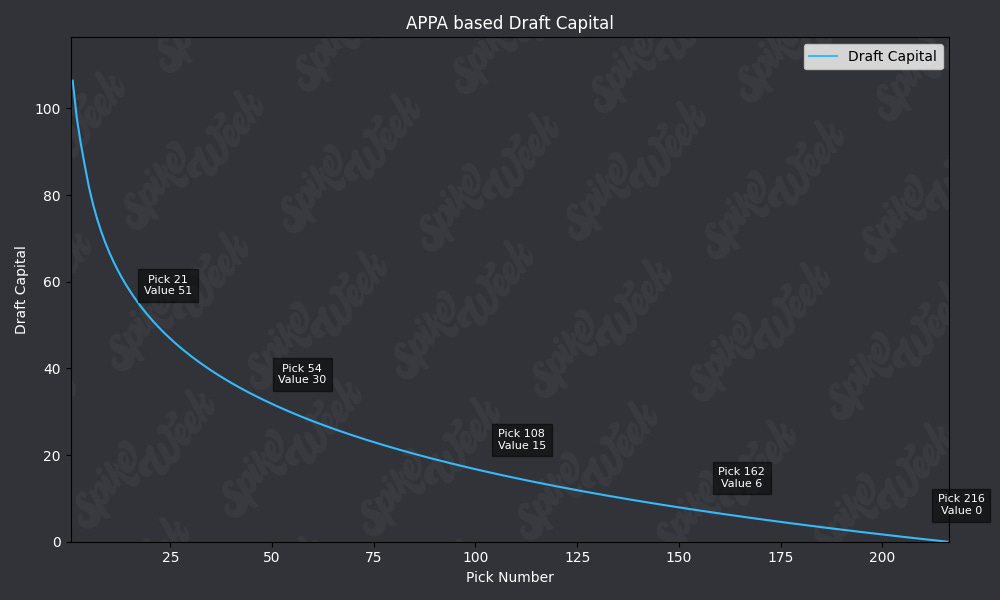“If I have seen further, it is by standing on the shoulders of giants.” – Isaac Newton
First, I want to give credit to Mike Leone of Establish the Run for the work he did in his Best Ball Manifesto. Today we’re going to examine his draft capital model, and take a look at the revisions I made to it by incorporating our proprietary metric known as APPA (Average Player Points Added). If you haven’t read Mike’s manifesto, here’s a link specifically to Part 2, where he discussed his draft capital model.
If you’re not familiar with APPA, here’s a link to my data bowl submission where I derived the metric along with three others. Or if you just want the high level overview, here’s the data bowl finalist podcast where I discuss my submission.
I’ll try to keep this article short, but if you’ve read some of my other work you’ll know that’s going to be a challenge for me. The purpose of this article is to give some context to the newest update to our Draft Hacker overlay tool. The update displays the amount of draft capital you have spent at each position in your draft, and it updates in real time as you make all your selections.
Here’s a sample from one of my drafts:

So what do all the numbers mean?
- Actual is the draft capital values of each pick you made in real time added up
- Effective is the draft capital based on that player’s historical ADP throughout the tournament (risers will have a lower effective draft capital, fallers will have a higher effective draft capital)
- Diff is the difference between your effective draft capital and your actual draft capital. This is a good measure of letting you know relative to the average team in the tournament if you’ve managed to get more bang for your buck with your draft capital spending. Think of this as a better measure of value than just raw ADP value.
Positive is better, it means you’re getting a draft capital value against the field (it’s based on the ADP of a player through the entire tournament). You need to think critically and apply nuance to these numbers, they aren’t a skeleton key to building good teams, but they are a really powerful tool that you can use to help evaluate your drafts and better inform your decisions. Historical draft capital bucket numbers (like from Leone’s manifesto) are not prescriptive, they are just what worked in last season’s draft landscape. Think critically about what can work this season. In general I try to have the most draft capital at WR, I’m fine getting basically 0 DC at TE, but elite TE is of course a viable option as well. QB is very interesting due to the landscape change, but I think it’s pretty important to not invest too much DC at QB, especially not taking 2 early QBs.
Here is my updated version of the draft capital model:

Some high level conclusions of the Draft Capital model using APPA:
- Mike’s model was already very good using points above replacement as input.
- Early round picks are even more important than we initially thought, as draft capital falls off steeper, and late round picks are worth slightly less.
- After round 12 feel free to throw ADP out the window (more or less). That’s not to say start reaching on every pick, but if you have a good reason for drafting a player ahead of ADP (strong correlation boosts, needing to increase your capital spent at a position of need, specific player archetype is required for your roster construction, player takes, etc.) then you aren’t sacrificing very much with respect to draft capital by reaching in these later rounds.
If you have questions you can always find me hanging out in the Spike Week discord channel. I love talking about the game, so don’t be a stranger.




